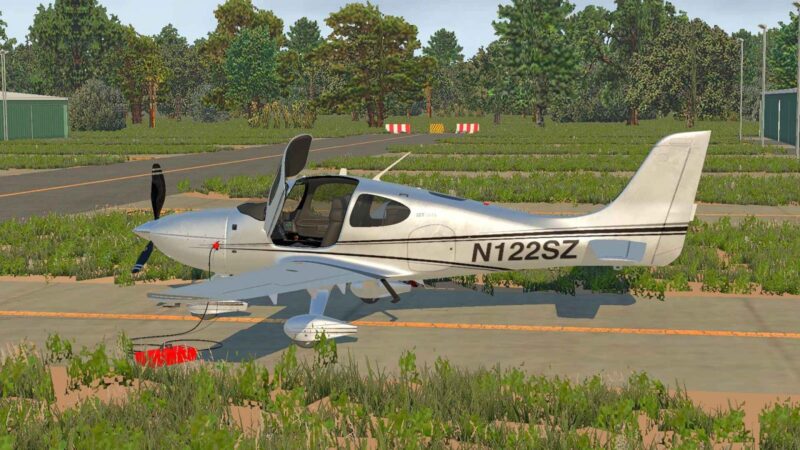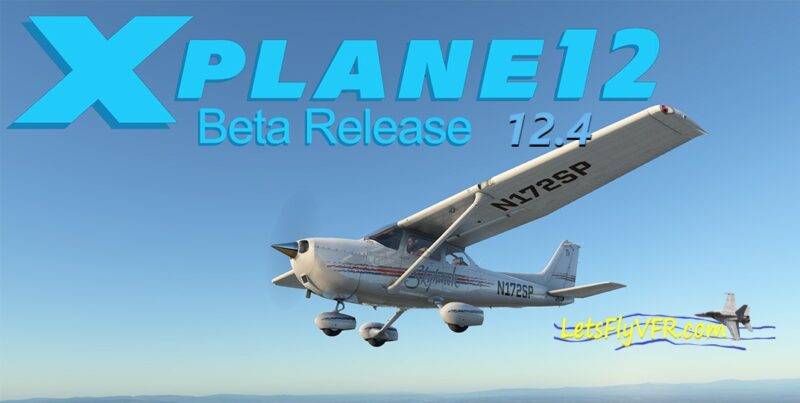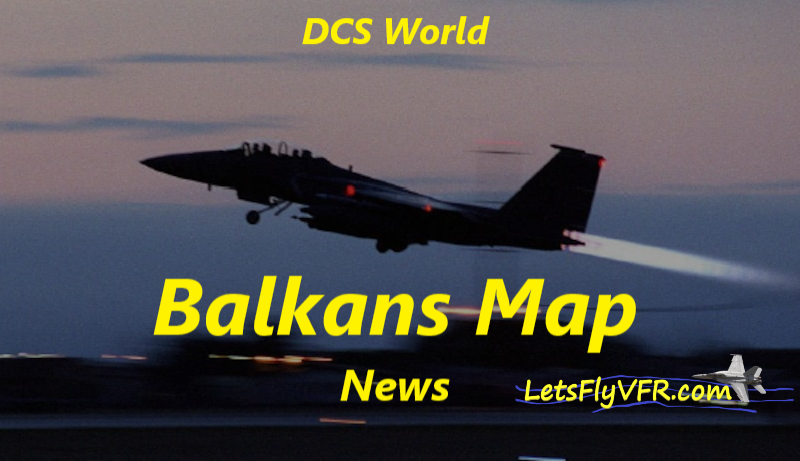X-Plane 12 vs Real Life Can You Differentiate?
Passionate flight simmers often ask X-Plane 12 vs Real Life, can you really compare it. Can you differentiate between sim flying and real world flying? This blog will burst the truth bubble on some of the uninformed but passionate arguments we see regularly in forums. The direction of this post is to determine how realistic if at all home flight simulators are or are not! We will discuss the pros and cons of using flight simulators to learn to fly with the important differences between them as well as where it’s appropriate!
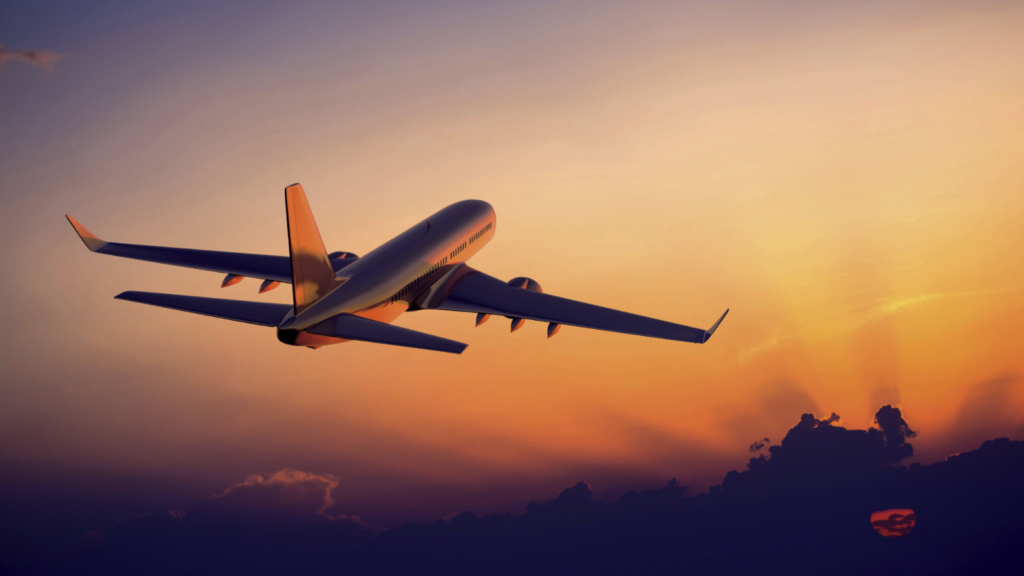
Real World Pilot Point of View.
Ok first let me introduce myself and my experience base regarding aircraft experience and experiences! I believe this gives a more than fair perspective on some real-world comparison basis to share with you, my reader. Let’s be clear. this is not about inflating or deflating passionate flight simmers! We all want to believe they are realistic but are they really?
I’m a real-world qualified Sport Pilot in Australia so I have something to compare too when it comes to stick and rudder work in X plane 11/12 and real-world aircraft. I’ve flown Diamond DA-20, Jabiru 160/170/230 aircraft and experienced Blackhawk, Iroquois and Chinook helicopters as a passenger. I have flown in Macchi Jet trainers with a few minutes stick time and a back seat flight including going supersonic in Mirage IIID out of Singapore in my RAAF days!
You may say well just sitting in a jet fighter does not make you qualified to speak on flying jets in a sim and I would agree! This is where I will take the opinions and experiences of real-world fighter pilots such as MOVER from his own YouTube channel as well as other fighter pilots on YouTube. They give their own with their own perspectives on this subject.
X-Plane 12 vs Real Life.
Let’s cut the crap before we all get very excited about the physics in X Plane 11/12 as well as the incredible graphics in Microsoft Flight Simulator 2020 as well as DCS World of which I love them all! Yes, I’m a passionate flight sim guy flying all of the above sims and more so let’s dive in!
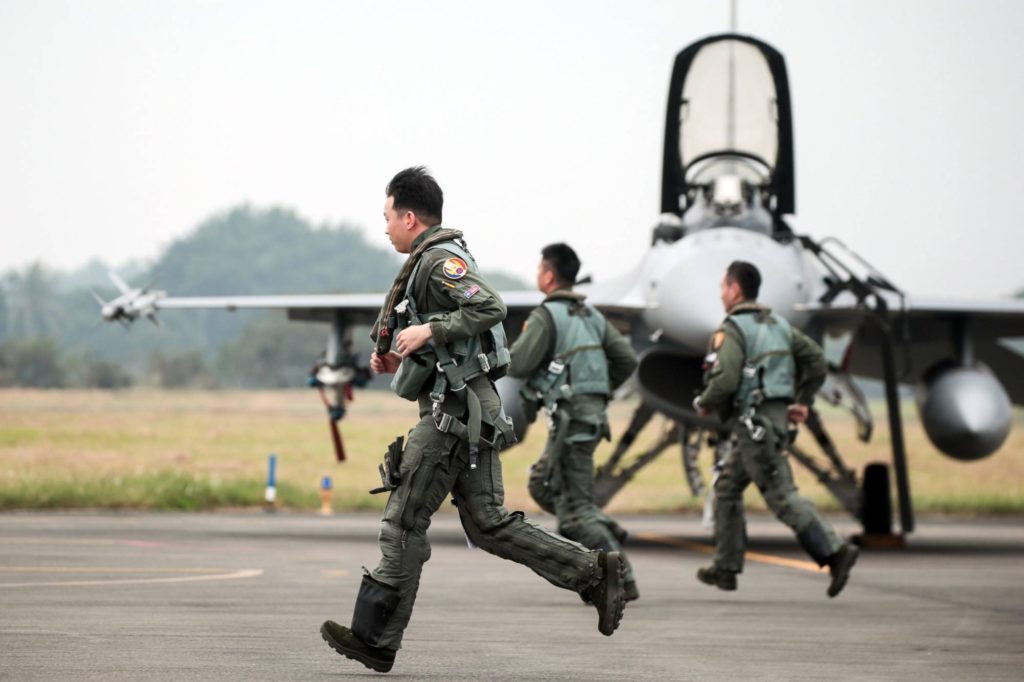
Flight simulators have been part of my life since the 1980s when the first slide show 16 colour flight sims like F-119 Stealth Fighter were released. Pushing a mere 7.8 MHz and less ram than a cheap calculator today, these epic beginnings did not ever suggest we would have the quality and realism of flight simulators we have today!
Professional Flight Simulator Classes Available Today.
Let’s look at what’s said regarding the use of professional flight simulator platforms. These platforms are widely used and I’ve flown the RAAFs F-18A flight simulator and can offer my thoughts on what they are useful for and what they don’t achieve with some caveats.
Professional flight training simulators used by companies and flight schools are typically certified by aviation authorities like the FAA (Federal Aviation Administration) in the United States or EASA (European Union Aviation Safety Agency) in Europe. These simulators are used for specific training purposes and can be used to log flight hours, provided they meet certain criteria and are approved by the relevant aviation authority. Below are some examples of professional flight training simulator platforms:
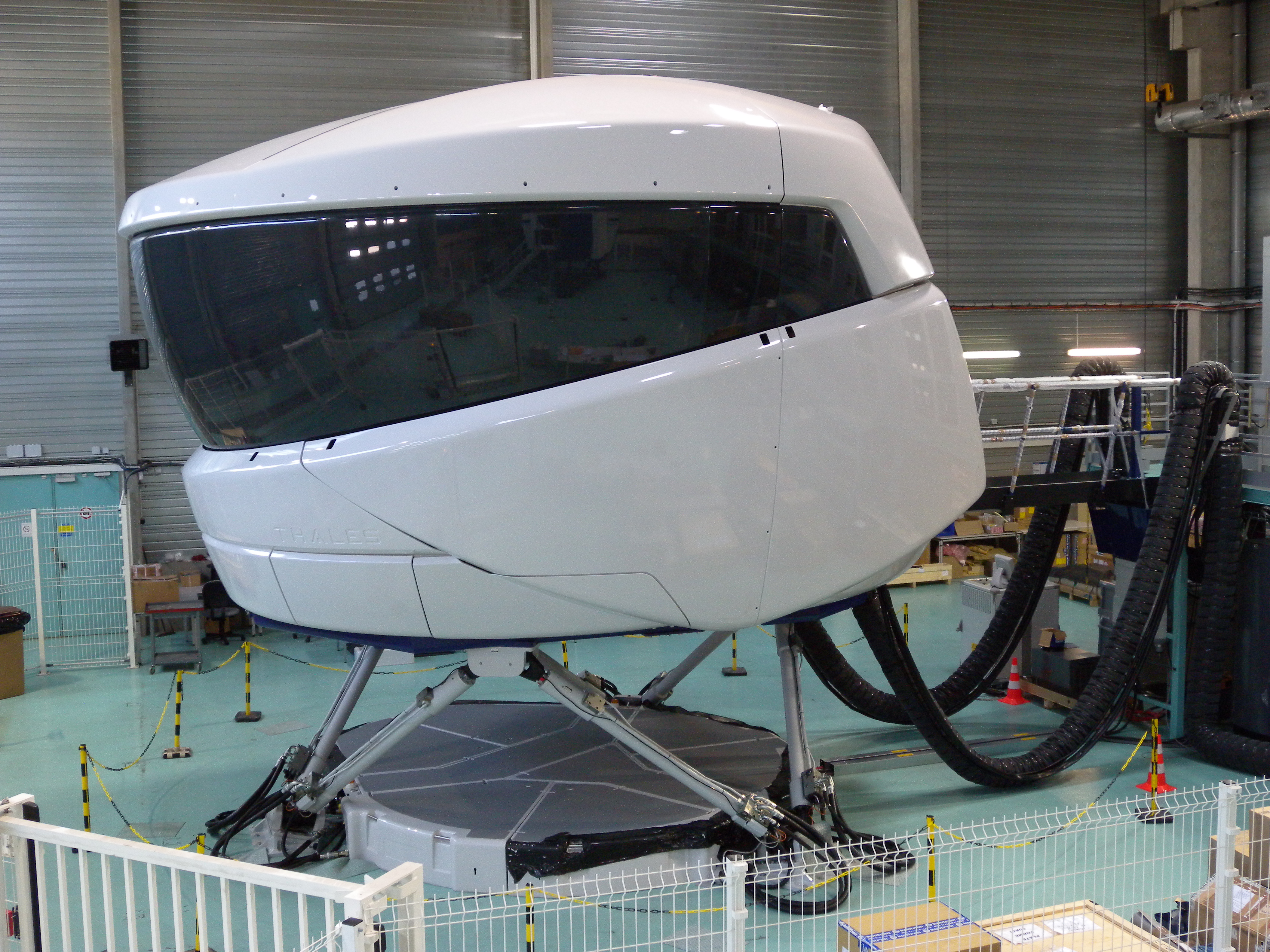
- CAE Simulators: CAE is a leading provider of civil aviation training solutions, including full-flight simulators (FFS) and flight training devices (FTD). They offer a range of simulators for various aircraft types, including regional and commercial jets. CAE simulators are widely used by airlines and flight training organizations for pilot training.
- FlightSafety International Simulators: FlightSafety International is known for its high-quality flight training devices and full-motion simulators. They provide simulators for a wide range of aircraft, from general aviation to large commercial jets. These simulators are commonly used for pilot training and can be approved for logging flight hours.
- L3Harris Technologies Simulators: L3Harris offers a variety of simulation and training solutions for both civil and military aviation. Their simulators are used by airlines, flight schools, and government agencies for pilot training and can be certified for logging flight hours.
- Airbus Training Simulators: Airbus provides training solutions, including simulators, for their own aircraft models. These simulators are used by Airbus training centers and other aviation organizations for Airbus aircraft-specific training.
- Boeing Training Simulators: Boeing offers simulators and training solutions for their aircraft, including commercial airliners like the Boeing 737 and 787. These simulators are used in Boeing training centres and by airlines worldwide.
- Embraer Training Simulators: Embraer provides simulators and training services for their regional and commercial aircraft. These simulators are used by Embraer training centers and airline partners.
- Flight Training Devices (FTD) and Advanced Aviation Training Devices (AATD): These are lower-cost training devices that can be used for logging flight hours under certain conditions. FTDs and AATDs are often used in flight schools and for recurrent training.
Professional Training
The suitability of a professional flight training simulator for logging flight hours depends on various factors, including its certification level, the specific training program, and the regulations of the aviation authority overseeing the training. Full-flight simulators (FFS) are typically certified to the highest standards and are commonly used for logging flight hours in type rating and recurrent training programs. Flight training devices (FTDs) and advanced aviation training devices (AATDs) may also be approved for logging hours under certain conditions.
It’s essential to check with the relevant aviation authority and the training organization to determine which simulators are eligible for flight hour logging in your specific training context. These regulations can vary by region and type of pilot license. Its also worth adding that popular flight simulator programs like X Plane 12 do have professional options to be used with professional motion platforms FYI.
Motion vs Fixed Platform flight simulators – Which are Deceptive enough to Feel Real?
Motion and fixed-platform flight simulators serve different purposes and offer varying levels of realism in simulating the experience of flying. Let’s explore the differences between them and discuss their ability to create a realistic flight experience. The use case differs depending on the type of simulator as does the realism. The motion sims provide massive realism to the point pilots have something of a real-world disconnection believing they are flying a real aircraft it is said.
Fixed-Platform Flight Simulators:
- No Motion: Fixed-platform simulators do not have any physical motion components. The pilot sits in a stationary cockpit, which replicates the controls, instruments, and visuals of an aircraft but remains static. No Matter the software these are systems and procedural simulators only!
- Cost-Effective: Fixed-platform simulators are generally more cost-effective to build and maintain compared to motion-based simulators, making them accessible to a broader range of users. No Matter the software these are systems and procedural simulators only!
- Training and Procedure Practice: Fixed-platform simulators are often used for training purposes, procedural practice, and skill-building. They can be highly effective for learning aircraft systems, practicing cockpit procedures, and developing instrument flying skills. No Matter the software these are systems and procedural simulators only!
- Less Realistic Sensation: While fixed-platform simulators provide a realistic visual and control experience, they lack the physical sensations of motion, which can limit their ability to create a truly immersive and realistic flight experience. For some users, this may result in a less convincing sense of flight.
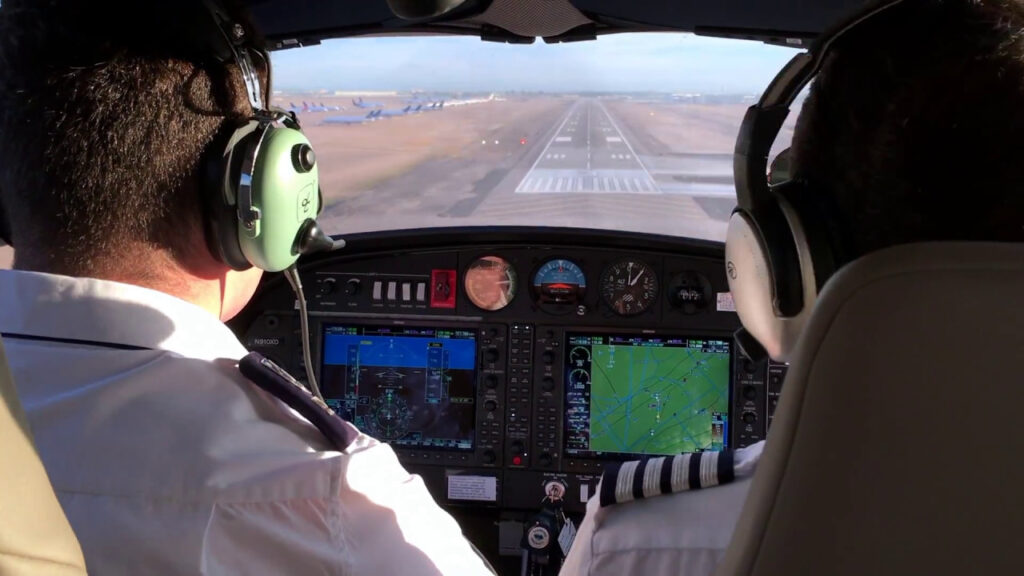
Motion-Based Flight Simulators:
These simulators are very expensive and not generally available to home X Plane sim pilots.
- Physical Motion: Motion-based flight simulators are equipped with hydraulic or electric motion systems that can tilt, pitch, and roll the cockpit to simulate the sensations of flight. This includes movements like turbulence, banking, and pitch changes. Starting to feel realistic but not fully immersive.
- Realistic Sensations: Motion-based simulators excel at replicating the physical sensations of flight, creating a more immersive and convincing experience. Pilots can feel G-forces, turbulence, and other movements that are essential for realistic training and simulation. Now we are talking about what you need to get the real-world experience.
- High Cost: These simulators are significantly more expensive to design, build, and maintain due to the complexity of their motion systems. They are often used by professional flight training organizations and for advanced pilot certification.
- Motion Sickness: Some users may experience motion sickness when using motion-based simulators, as the physical sensations can be intense and may not match perfectly with the visuals.
Deceptiveness and Realism:
The level of deception and realism in a flight simulator depends on various factors, including the quality of the simulation software, the fidelity of the cockpit controls and visuals, and the motion system (if present). Motion-based simulators are generally more deceptive in creating a realistic sensation of flight due to their ability to replicate physical movements. However, even fixed-platform simulators can be highly convincing in terms of visual and procedural realism.
Ultimately, the choice between a motion-based and fixed-platform flight simulator depends on the specific training or recreational goals of the user, budget considerations, and the importance of replicating physical sensations. Both types of simulators can provide valuable training experiences, but motion-based simulators are typically better suited for high-level flight training and advanced pilot certification due to their ability to recreate realistic physical sensations.
The options for a real-world pilot wanting a realistic flight simulator experience with X Plane 12 really requires the feel a top quality and probably $100,000 plus motion system would offer.
How do REAL WORLD Pilots Fly Aircraft? Instruments or Feeling?
Real-world pilots fly aircraft primarily using a combination of instruments and their own sensory perception, along with extensive training and experience. Here’s an overview of how these factors work together:
Instruments
Modern aircraft are equipped with a wide array of instruments that provide crucial data to the pilot. These instruments include:
- Attitude Indicator: This instrument shows the aircraft’s orientation in relation to the horizon, helping the pilot maintain the desired pitch and bank angles.
- Altimeter: Measures the aircraft’s altitude above sea level.
- Airspeed Indicator: Displays the aircraft’s airspeed.
- Heading Indicator or Compass: Provides the aircraft’s heading or direction.
- Vertical Speed Indicator: Indicates the rate of climb or descent.
- Navigation Instruments: Such as GPS, VOR (VHF Omnidirectional Range), and ILS (Instrument Landing System), which help pilots navigate and follow specific routes.
Feeling:
Pilots also rely on their sensory perception to fly. This includes the following senses:
- Visual: Pilots use their eyes to maintain situational awareness, spot other aircraft, identify landmarks, and assess weather conditions.
- Auditory: They listen for engine sounds, warnings, radio communications, and other audible cues.
- Tactile: The feel of the controls (stick or yoke) and the forces acting on the aircraft provide important feedback. For example, the sensation of turbulence or the pressure on the control surfaces helps pilots make adjustments.
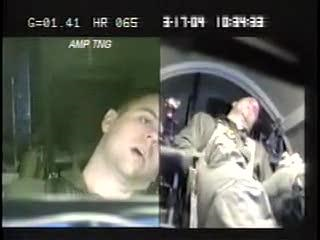
- Training and Experience: Pilots undergo extensive training to develop the skills needed to interpret instruments, make critical decisions, and respond to various scenarios. They learn to manage the aircraft’s systems and navigate safely. Experience plays a significant role in honing their ability to interpret the sensory input and instrument data effectively.
- Automation: Many modern aircraft are equipped with sophisticated autopilot systems. Pilots can program these systems to control various aspects of flight, including altitude, heading, and airspeed. However, even when using autopilot, pilots must monitor the system and be ready to take control if necessary.
- Communication: Pilots maintain communication with air traffic control (ATC) to receive instructions, updates on weather conditions, and information about other aircraft in the vicinity.
In essence, flying an aircraft is a blend of science and art.
In essence, flying an aircraft is a blend of science and art. Pilots use instruments to obtain accurate data and feedback, but they also rely on their instincts and sensory perception to make decisions and adjustments, especially during critical phases of flight such as take-off, landing, and in adverse weather conditions. Pilots essentially fly by the seat of their pants. They feel the Gs on their bodies as well as the buffet on the wings when reaching maximum performance especially in a fighter. This is why real-world fighter pilots like MOVER feel disconnected from a simulator like DCS World because all those natural feedback loops, they have flown by for years are not present!
The question between x-plane 12 vs real life flying remains somewhat the same because we don’t get the feedback from the aircraft like we do in a real one! You can feel and also hear the airflow as well as feel the buffeting on the wings when flying on the limit and again X Plane natively does not offer these essential realism ques.
The balance between these elements ensures safe and effective piloting.
Make X Plane 12 More Realistic.
Creating a genuinely realistic flying experience is a challenge for most as its going to cost money to get equipment to do so. Simulator gear that provides some physical feedback is a great place to start. A motion platform is obviously the best place to start, and they are not always super expensive and come from two degrees of Freedom right up to six degrees of Freedom (6DOF).
These platforms can help fool your mind your actually in a flying aircraft with the 6DOF giving you left to right movement as well as forward and backward coving the basic directions. In addition, they offer a yaw movement left and right which is pretty important to real world flying. To make it even better
Six Degrees of Freedom – 6 DOF
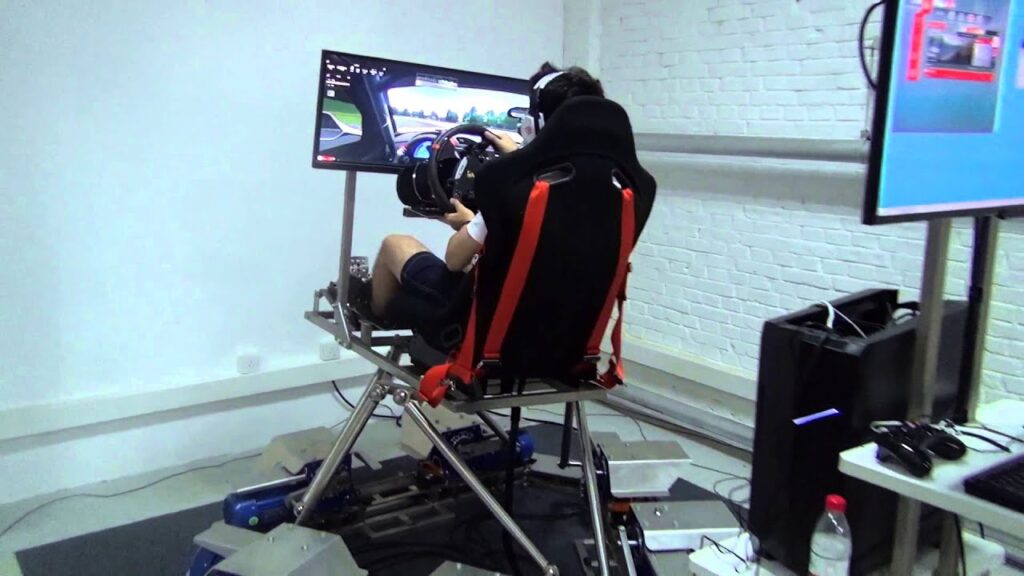
6 DOF stands for “Six Degrees of Freedom,” and it is a term commonly used in the context of flight simulation and virtual reality (VR) to describe the ability of an object or system to move freely in three-dimensional space along six different axes. These six axes are:
- Translation in X-axis (surge): This represents movement along the forward and backward axis, allowing an object to move forward or backward.
- Translation in Y-axis (sway): This represents lateral movement, allowing an object to move sideways.
- Translation in Z-axis (heave): This represents vertical movement, allowing an object to move up and down.
- Rotation around X-axis (roll): This is the rotation around the object’s longitudinal axis. It simulates the tilting of the object from side to side.
- Rotation around Y-axis (pitch): This is the rotation around the object’s lateral axis. It simulates the pitching motion, where the object tilts forward or backward.
- Rotation around Z-axis (yaw): This is the rotation around the object’s vertical axis. It simulates the yawing motion, where the object turns left or right.
In the context of flight simulation, the concept of 6 DOF is crucial for creating a more realistic and immersive experience for pilots or users. Here’s how it contributes to realism:
Realism
- Realistic Movement: By simulating all six degrees of freedom, flight simulators can replicate the full range of movements that an aircraft or other flying object can make in real life. This includes not only the primary translational and rotational movements but also the subtle vibrations and adjustments that occur during flight.
- Enhanced Training: Flight simulators with 6 DOF capabilities are used extensively in pilot training because they allow trainees to experience and practice complex maneuvers, emergency procedures, and various flight conditions without the risks associated with real aircraft.
- Improved Immersion: The more degrees of freedom a simulator can replicate, the more immersive the experience becomes for the user. Sensations like turbulence, banking, and changes in altitude can be accurately simulated, enhancing the feeling of actually being in the cockpit.
- Research and Development: Aerospace engineers and researchers use 6 DOF simulators to test and validate new aircraft designs, control systems, and flight characteristics. These simulators provide a safe and controlled environment for experimentation.
- Entertainment: In the world of entertainment, flight simulators with 6 DOF can provide a thrilling and realistic experience for gamers and aviation enthusiasts, allowing them to pilot aircraft in a highly immersive virtual environment.
Overall, 6 DOF plays a pivotal role in making flight simulation more realistic by faithfully replicating the complete range of motion and sensations experienced during actual flight, whether for training, research, or entertainment purposes.
X-Plane 12 vs Real Life VR – Makes it Real!
X-Plane 12 and Real Life VR (Virtual Reality) or Mixed Reality (MR) both aim to enhance the flight simulation experience by bringing a deeper level of immersion. Here’s how VR and Mixed Reality contribute to creating a more immersive flight simulation experience:
1. Visual Realism:
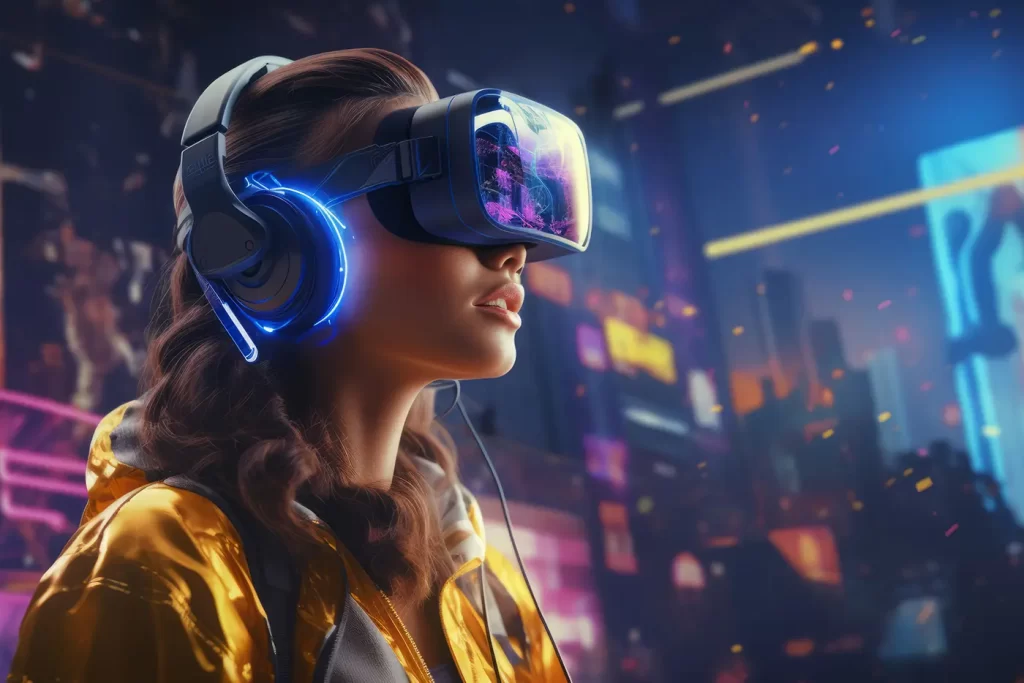
- Immersive 3D Environment: VR and MR headsets provide a 3D environment that surrounds the user, creating a convincing sense of being inside the aircraft and within the simulated world. This level of immersion is hard to achieve with traditional monitors.
- Realistic Scenery: With VR and MR, users can experience highly detailed and realistic scenery that feels more true to life. This can include landscapes, airports, and cityscapes.
- 360-Degree View: Users can look in any direction, including up, down, and around the cockpit, just like they would in a real aircraft. This freedom of movement adds to the sense of presence and realism.
2. Enhanced Controls and Interaction:
- Gesture Control (Mixed Reality): Some MR setups incorporate hand-tracking technology, allowing users to interact with cockpit controls and switches using hand gestures, enhancing the feeling of physically manipulating the aircraft’s controls.
- Realistic Control Inputs: VR and MR setups often support hardware peripherals like flight yokes, pedals, and throttle quadrants. These physical inputs provide a more authentic flight control experience.
3. Spatial Audio:
- 3D Audio: VR and MR systems typically include spatial audio, which means sounds are rendered in 3D space. This allows users to accurately locate and identify sounds, such as engine noise, cockpit alerts, or ATC communications, enhancing immersion.
4. Physical Feedback (Haptic Feedback):
- Haptic Feedback Devices: Some VR setups include haptic feedback devices that can simulate physical sensations, such as vibrations and forces. For example, users can feel the rumble of turbulence or the feedback from the aircraft’s controls, further immersing them in the simulation.
5. Realistic Body Movements:
- Head and Body Tracking: VR and MR systems track the user’s head and sometimes body movements, allowing them to lean in and around the cockpit, peer out of windows, and check instruments realistically.
6. Virtual Reality as a Training Tool:
- Realistic Training: VR can be a valuable tool for pilot training, offering a cost-effective and safe way to practice procedures, emergency scenarios, and instrument flying in a highly immersive environment.
7. Social and Multiplayer Experiences:
- Multiplayer Integration: Some VR flight simulation platforms allow users to fly with others in the same virtual world, creating a sense of shared experiences and camaraderie.
8. Accessibility and Cost:
- Wider Accessibility: VR technology has become more affordable and accessible, making it available to a broader audience of flight simulation enthusiasts.
While VR and Mixed Reality undoubtedly enhance immersion in flight simulation, it’s essential to note that they also have some limitations, such as potential motion sickness, hardware requirements, and the learning curve associated with their setup and use. However, for those seeking the most realistic and immersive flight simulation experience, VR and Mixed Reality are powerful tools that can bridge the gap between virtual and real-world aviation experiences.
AUDIO Immersion is a Big Factor in Realism.

Audio immersion is indeed a significant factor in enhancing realism in flight simulation, including X-Plane 12. Realistic audio can greatly contribute to the overall sense of presence and immersion in the simulated environment. Here’s how audio immersion is achieved in flight simulation, including the types of sound systems available and the possibility of surround sound in headsets:
1. Realistic Sound Sources:
- Aircraft Engines: The sounds of aircraft engines are crucial for immersion. Realistic engine noise, including startup, idle, takeoff, cruise, and landing sounds, can make users feel like they are truly in control of an aircraft.
- Environmental Sounds: Environmental audio, such as wind, rain, thunder, and ambient airport noises, adds depth to the experience, making it feel more like real-world flying.
- Cockpit Sounds: Accurate cockpit sounds, including the clicking of switches, the beeping of instruments, and the chatter of air traffic control, contribute to the feeling of operating a complex aircraft.
2. 3D Positional Audio:
- Modern flight simulation software, including X-Plane 12, often incorporates 3D positional audio. This means that sounds are rendered in a three-dimensional space, allowing users to perceive the direction and distance of sounds accurately.
- For example, if an engine noise is coming from the left, users will hear it primarily in their left ear, contributing to the spatial awareness and immersion.
3. Surround Sound Systems:
- Flight simulation enthusiasts often use surround sound systems, such as 5.1 or 7.1 audio setups, to create a more immersive experience.
- 5.1 Surround Sound: This system includes five main speakers (front left, center, front right, rear left, rear right) and a subwoofer for low-frequency effects. It can provide a more accurate representation of audio sources’ positions in space compared to stereo speakers.
- 7.1 Surround Sound: This system adds two additional rear speakers, further enhancing the spatial audio experience. It can be especially effective in simulating the soundscape of a cockpit with multiple instruments and controls.
4. Surround Sound in Headsets:
- While surround sound systems are commonly used with desktop setups, some gaming headsets and VR headsets also offer virtual surround sound capabilities.
- Virtual surround sound headsets use advanced audio processing to simulate the effect of multiple speakers around the user’s head. They create the illusion of directionality and spatial audio within the limitations of a headset’s two physical ear cups.
- The effectiveness of virtual surround sound in headsets can vary depending on the quality of the headset and the accuracy of the audio processing algorithms. Some users find it to be a compelling alternative to traditional surround sound setups.
Ultimately, audio immersion is a crucial aspect of creating a realistic flight simulation experience. Realistic sound systems, whether using traditional surround sound setups or virtual surround sound in headsets, help users feel more connected to the virtual environment and contribute to the overall sense of presence and immersion in X-Plane 12 and other flight simulation platforms.
Wrap around Visuals Display Systems for Realistic Immersion.
Wraparound visual display systems, often referred to as immersive displays or simulators, can greatly enhance the realism and immersion of flight simulations like X-Plane 12. These systems typically involve large screens or projection setups that surround the pilot or user to provide a more realistic and immersive visual experience. There are several types of wraparound display systems available, each with its own range of features and price points:

- Single Large Curved Monitor: This is one of the simplest and most cost-effective options. You can use a large curved monitor to provide a wider field of view compared to a standard flat screen monitor. These monitors come in various sizes and resolutions, and their cost can vary based on the specifications.
- Triple Monitor Setup: Many flight simulation enthusiasts use three flat or curved monitors to create a wraparound display. This setup typically involves arranging three monitors side by side to provide a wider horizontal field of view. While it’s more immersive than a single monitor, it’s still relatively affordable compared to some other options.
- Projection Systems: Projectors can be used to create a wraparound visual display by projecting images onto a curved or flat surface. You can use multiple projectors to cover a wider field of view. Projection setups can offer a high level of immersion and realism, but they can also be expensive due to the cost of high-quality projectors and screens.
- Dome Displays: Dome displays are large curved screens that completely surround the user, providing a truly immersive experience. These systems are often used in professional flight simulators and military training applications. Dome displays are expensive and require a dedicated space, making them suitable for serious enthusiasts and professionals.
- Virtual Reality (VR): VR headsets like the Oculus Rift, HTC Vive, and Valve Index can provide an incredibly immersive experience. While not a traditional wraparound display, VR places you inside the virtual cockpit and allows you to look around freely. VR headsets vary in price, but they are generally more affordable than dome displays.
The cost of these wraparound display systems can vary widely. Single monitors and triple monitor setups are relatively affordable, while projection systems, dome displays, and high-end VR setups can be quite expensive. The choice depends on your budget, available space, and the level of realism you want to achieve.
In terms of enhancing immersion in X-Plane 12 or any flight simulator, wraparound displays offer several benefits:
- Increased Field of View: A wider field of view allows you to see more of your virtual surroundings, making it easier to spot landmarks, other aircraft, and changes in terrain.
- Realistic Cockpit Experience: With a wraparound display, you can create a more realistic cockpit feel, as you can position instruments and controls on multiple screens or within your VR headset.
- Enhanced Spatial Awareness: The immersive nature of these displays can improve your spatial awareness, making it easier to judge distances and altitudes.
- Immersive Training: If you’re using the simulator for pilot training or practice, wraparound displays can provide a more lifelike training environment, helping you develop better piloting skills.
Ultimately, the choice of a wraparound display system for X-Plane 12 depends on your budget and how deeply you want to immerse yourself in the simulation. Keep in mind that you may also need a powerful computer to run the simulator smoothly, especially with higher resolution displays and VR setups.
Force Feedback Controls are Essential but Hard to Find!
Force feedback controls, such as force feedback joysticks and yokes, can significantly enhance the immersion of flying in flight simulators like X-Plane 12. These controls provide tactile feedback to the user, allowing them to feel the effects of aerodynamic forces, turbulence, and control inputs in a more realistic manner. While they may not be as common as regular joysticks or yokes, there are several options available, and they can greatly improve your flight simulation experience.
Here are some force feedback control options and how they can add to the immersion of flying in X-Plane 12:

- Force Feedback Joysticks: Force feedback joysticks are designed to simulate the forces experienced by a pilot when controlling an aircraft. They provide resistance and vibrations that correspond to various flight conditions, such as turbulence, G-forces, and trim adjustments. This tactile feedback makes it easier to “feel” the aircraft and make precise control inputs. Some popular force feedback joystick options include the Logitech G940 and the Microsoft Sidewinder Force Feedback 2 (although availability may vary).
- Force Feedback Yokes: Yokes are more common in general aviation flight simulation setups, and force feedback yokes provide a realistic control experience for aircraft like Cessnas and other small planes. These yokes offer resistance and feedback when maneuvering the aircraft, making it easier to sense changes in pitch and roll. Products like the Yoko the Yoke and the Brunner CLS-E NG are well-regarded options.
- Rudder Pedals: While not typically associated with force feedback, some high-end rudder pedals incorporate force feedback features to simulate the effects of yaw and ground handling forces. This can add an extra layer of immersion when taxiing and controlling the aircraft on the ground.
- Custom DIY Solutions: Some enthusiasts have created custom force feedback systems using off-the-shelf hardware and DIY components. These setups can be tailored to your specific needs and can provide a highly immersive experience, but they require technical expertise.
Force feedback controls can add to the immersion of flying in X-Plane 12 in the following ways:
- Realistic Sensation: Force feedback replicates the physical sensations of flying, such as the resistance felt when pulling on the yoke during a climb or the vibrations experienced in turbulent conditions. This realism enhances the feeling of actually being in the cockpit.
- Improved Control: Force feedback makes it easier to control the aircraft precisely. You can sense changes in the aircraft’s attitude and adjust your inputs accordingly, leading to more accurate and responsive flying.
- Training and Skill Development: Force feedback controls are particularly useful for flight training and skill development. They help you develop a better sense of aircraft control and improve your ability to handle various flight situations.
- Enhanced Immersion: Immersion is a key aspect of any flight simulation experience. Force feedback adds an extra layer of immersion by allowing you to physically interact with the virtual aircraft and environment.
While force feedback controls can enhance immersion, they may be relatively harder to find than standard non-force feedback controls, and they can be more expensive. However, for serious flight simulation enthusiasts and those looking to train realistically, the investment can be well worth it to achieve a more authentic flying experience in X-Plane 12 or any flight simulator.
Butt shaker / Accessories.
Flight simulator enthusiasts often seek immersion accessories to enhance their experience and make it feel more realistic. These accessories can range from simple additions to more complex setups. Here are some popular immersion accessories for flight simulation:

- Butt Shaker (ButtKicker): A ButtKicker is a transducer that attaches to your flight simulator chair or cockpit and vibrates in response to in-game events, such as engine vibrations, turbulence, or landing gear deployment. This adds a tactile element to the simulation, making you feel like you’re actually in the aircraft.
- Rudder Pedals: Rudder pedals provide a more realistic way to control an aircraft’s yaw compared to using a joystick or a keyboard. They allow for precise control during taxiing, takeoff, and landing.
- Throttle Quadrants: These are physical levers or throttles that mimic the controls found in real aircraft. They enhance realism by allowing you to adjust engine power and manage multi-engine setups more authentically.
- Yoke or Joystick: While not exactly an immersion accessory, a high-quality yoke or joystick is essential for flight simulation. Many realistic yokes and joysticks come with a range of buttons and switches, replicating the controls found in real aircraft.
- Head-Tracking Devices: Devices like TrackIR or VR headsets can track your head movements, allowing you to look around the cockpit by simply moving your head. This adds a significant level of immersion by making the virtual cockpit respond to your natural movements.
- Multi-Monitor Setup: Using multiple monitors or ultra-wide screens can provide a more immersive field of view, giving you a more realistic sense of being inside the cockpit.
- Virtual Reality (VR) Headsets: VR headsets like the Oculus Rift or HTC Vive offer an unparalleled level of immersion. You can truly feel like you’re inside the aircraft cockpit, with 360-degree views and the ability to interact with cockpit controls using motion controllers.
- Cockpit Enclosures: Some enthusiasts build or purchase cockpit enclosures, which can range from simple frames to full-scale reproductions of aircraft cockpits. These enclosures can house all your controls and displays, providing an incredibly immersive experience.
- Instrument Panels and Gauges: Add-on instrument panels or separate instrument gauges can be placed on your cockpit enclosure or desk to replicate specific aircraft instrument clusters.
- Audio Systems: High-quality speakers or headphones with surround sound capabilities can help create a more immersive auditory experience, including engine sounds, ATC chatter, and environmental noise.
- Simulated Avionics: Some flight simulators allow you to connect physical avionics panels or modules that mimic real aircraft navigation, communication, and control systems.
- Force Feedback Joysticks: These joysticks provide force feedback, allowing you to feel resistance when moving control surfaces like ailerons, elevators, and rudders.
- Motion Platforms: For the ultimate immersion, motion platforms can tilt and move in response to in-game events, simulating the sensation of flight. These are typically more expensive and complex setups.
When choosing immersion accessories, consider your budget, available space, and how realistic you want your flight simulation experience to be. Accessories can range from simple and affordable to complex and expensive, so there are options for every level of enthusiast.
Author

Brendon McAliece is a multi-lingual expat who brings over three decades of flight simulator/PC building experience as well as over two decades of real-world jet fighter experience as a weapons/egress technician. He holds a sport pilot certificate giving him real-world flying experience.
Hi travels have taken him from Europe to the Middle East, Asia and his home of Australia. He has a passion for travel, languages, Flight simulation as well as Guitaring and Coffee. You can read more in his blogs below.
Learn More @
DreamingGuitar.com – DreamingCoffee.com – LetsFlyVFR.com
( HOME – BLOG – SHOP – ABOUT )
As an Amazon affiliate I may benefit from qualifying sales.
